Jaguar had no idea that the E-type would cause such widespread hysteria. It had planned to build what it naively deemed was a generous production run of 250 cars.

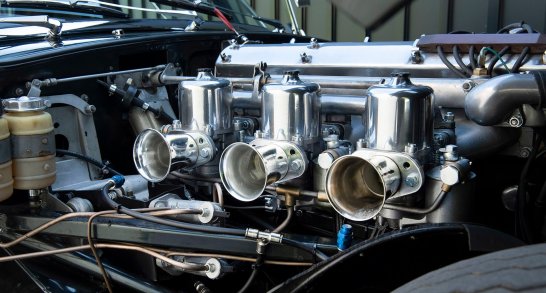
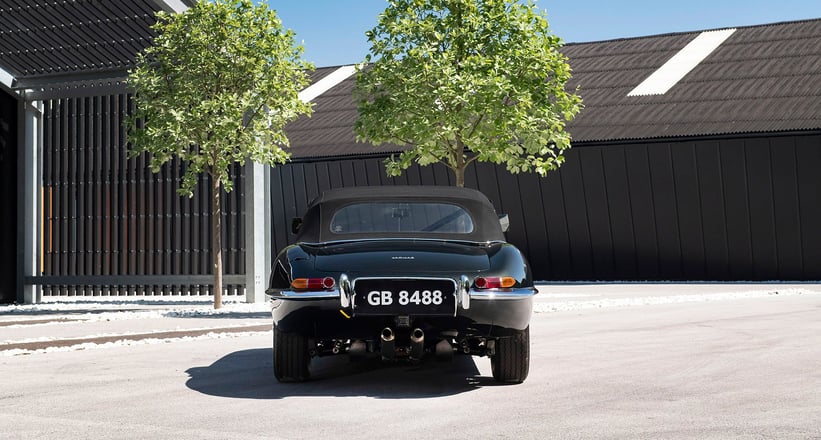
By the time doors had closed on the Geneva Motor Show in 1961, where the sultry £2,000 150mph Grand Tourer had caused jaws to drop, knees to weaken and eyes to well, the Coventry marque had taken north of 500 orders. And the reception was no less enthusiastic back in England, company test driver Norman Dewis describing it like a prairie fire ripping through the country.
The ever-astute founder of Jaguar Sir William Lyons understood the importance of not resting on any laurels. With demand far outstripping supply and deposits flying in especially quickly from across the pond, the earliest domestic E-types were allocated to those who could drum up further publicity. And the best way to achieve that back in 1961? The answer was simple – you went racing.
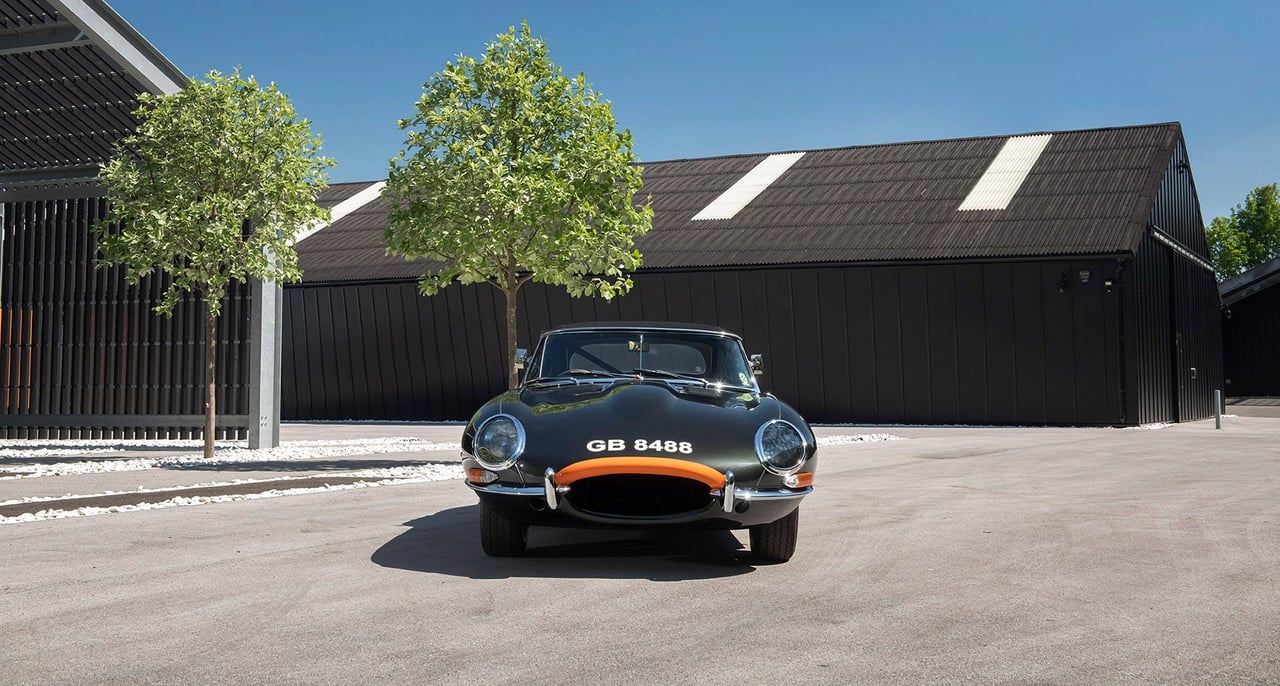
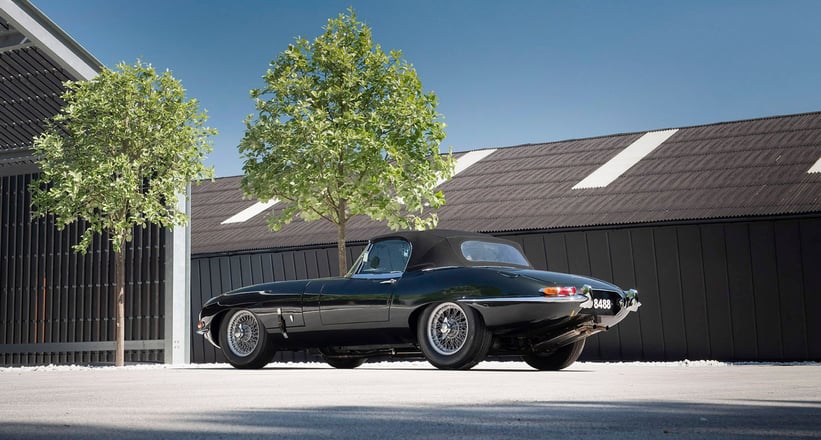
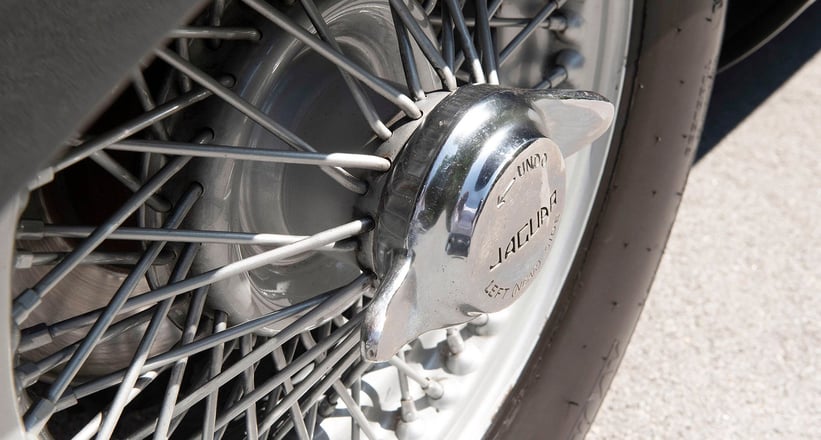
By that point, Aston Martin had already taken the fight to Ferrari and its formidable 250 GT ‘Short Wheelbase’ with the DB4GT. In Coventry, chief designer Claude Baily promptly initiated ‘Project ZP’, the goal of which was to rapidly transform seven E-type Roadsters into competition cars capable of beating the might of Maranello. That relatively little was done to the cars earmarked for ‘Project ZP’ was telling of the E-type’s expert and thorough development, carried out using knowledge gleaned from the mythical E2A racing prototype.
While a lightweight flywheel, competition clutch and close-ratio gearbox were fitted, it was the 3.8-litre straight-six engine that received the lion’s share of the attention – unsurprising, really, given the power and freakish reliability of Ferrari’s Colombo V12. The compression ratio was increased, an experimental ‘gas-flowed’ cylinder head and inlet manifold was installed, the engine’s internals were all upgraded to competition spec and beautiful trumpets were mounted alongside the SU carburettors.
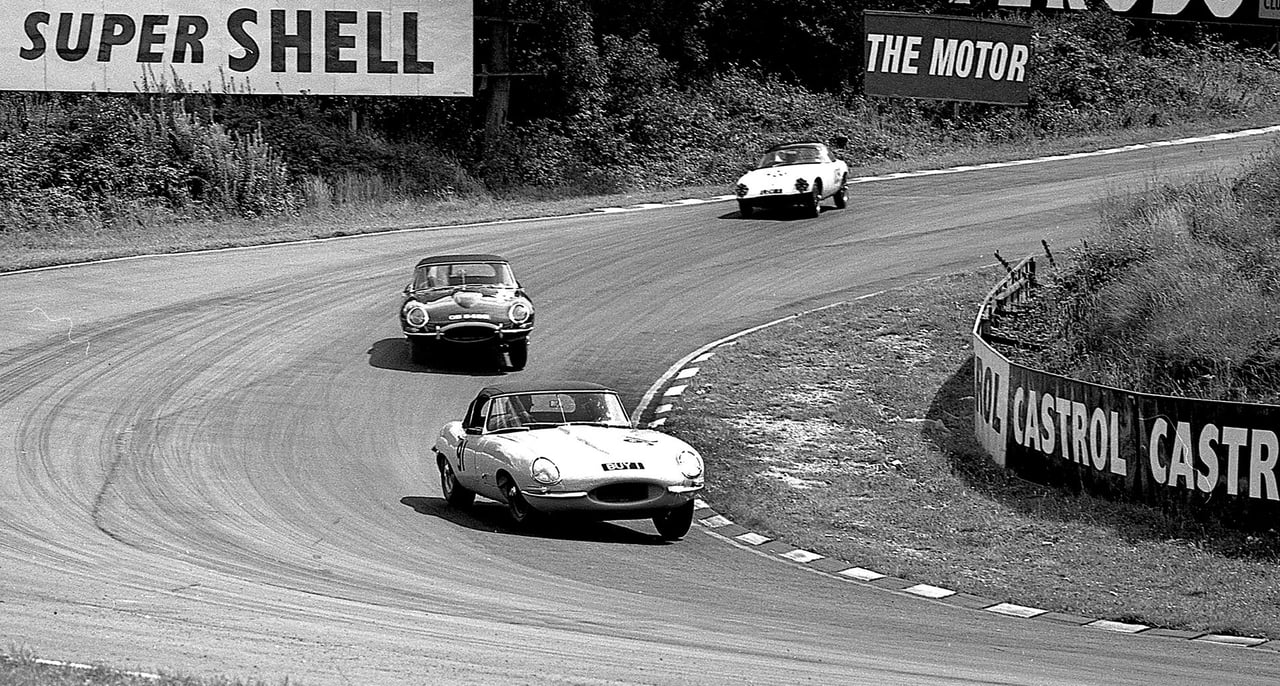
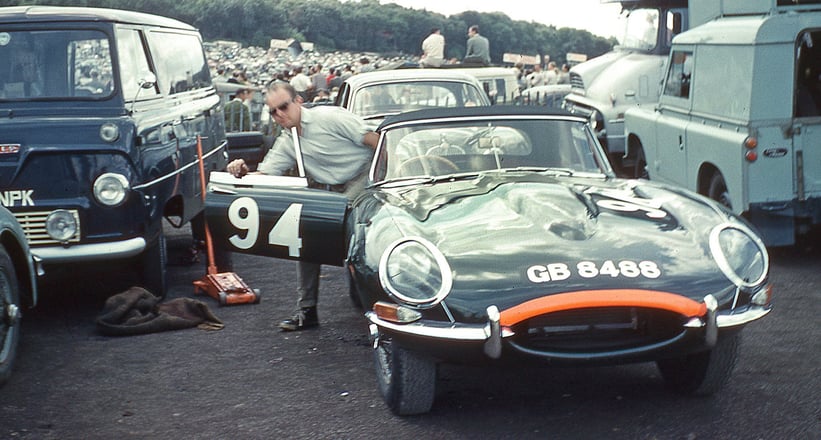
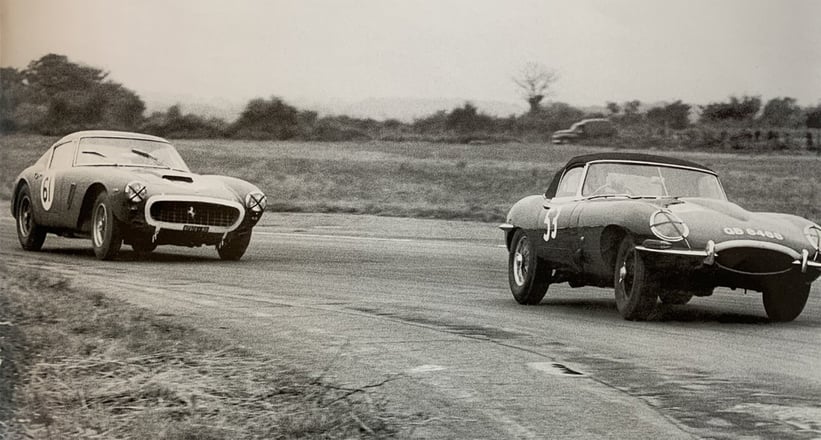
Six of the seven ‘Project ZP’ E-types were distributed in pairs (one designated for racing, a second for spares) to Jaguar’s most loyal privateer outfits: Equipe Endeavour, John Coombs Racing Organisation and the Peter Berry Racing Team. That the respective figureheads of these teams were close friends and confidants of Sir William Lyons is of little surprise. The final car in the septet, however, was delivered to an individual: Sir Gawaine George Hope Baillie, the 7th Baronet of Polkemmet Linlithgowshire.
The archetypal gentleman racer, Sir Gawaine was an extremely wealthy and well-connected aristocratic industrialist, who lived in the majestic 12th-century fortress of Leeds Castle in Kent, went motor racing at the weekends and compiled (entirely in secret, we might add) the greatest collection of British and British Empire stamps ever known to exist. Sotheby’s auctioned the comprehensively catalogued haul for a dizzying £16m after Baillie’s death, to the great surprise of his friends and wider family who had little idea of the hobby he fostered.
The Jaguar E-type you’re ogling here – just the eighth built, bearing chassis number 850008 and registration GB8488 – was the ‘Project ZP’ car delivered to Sir Gawaine. With a flash of orange warpaint around its snout, the car was promptly entered at the prestigious National Spring Meeting at Oulton Park in April of 1961, a race notable for Graham Hill’s win in another of the ‘Project ZP’ cars, the very first in a long list of victories for the Jaguar E-type.
Next up was the Archie Scott-Brown Memorial at Snetterton, where the car qualified fourth, before the International Meeting at Brands Hatch in August, the race that attracted all the Grand Prix stars looking to win the prestigious Peco Trophy. Sir Gawaine drove an impeccable race in his E-type, finishing sixth overall and fourth in class behind Messrs Moss, Salvadori and McLaren. The successful season was rounded out with a sixth overall in the Molyslip Trophy at Snetterton.
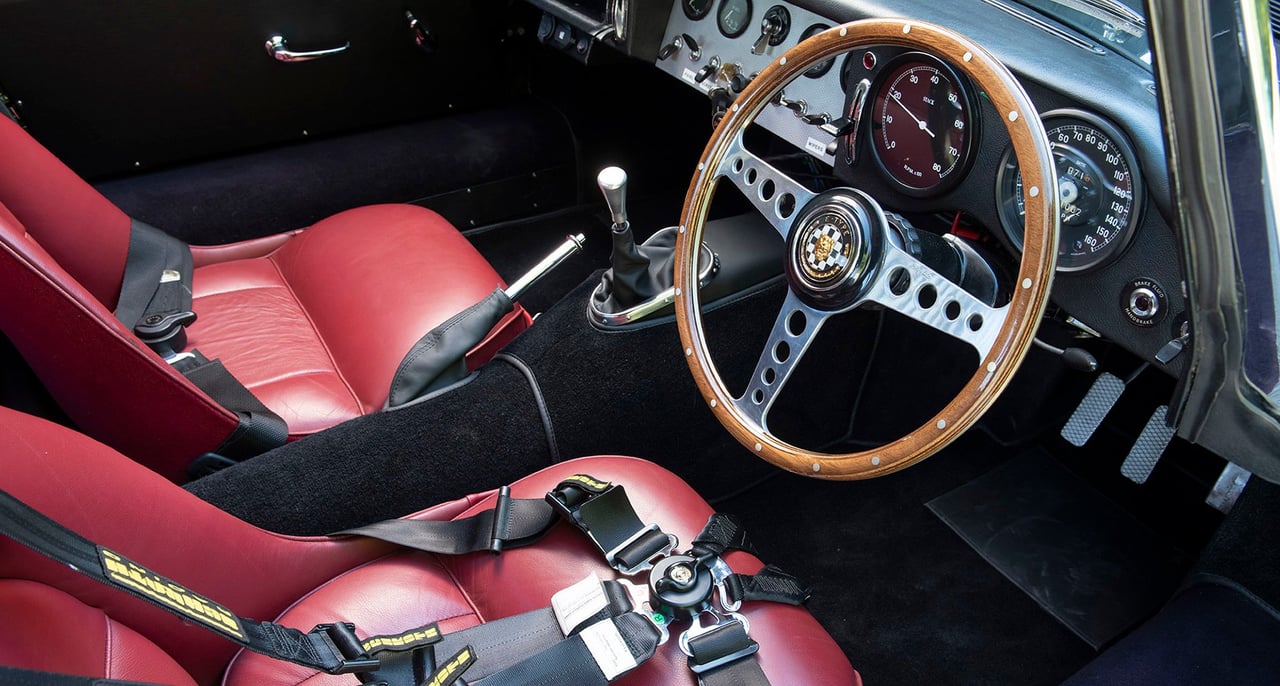
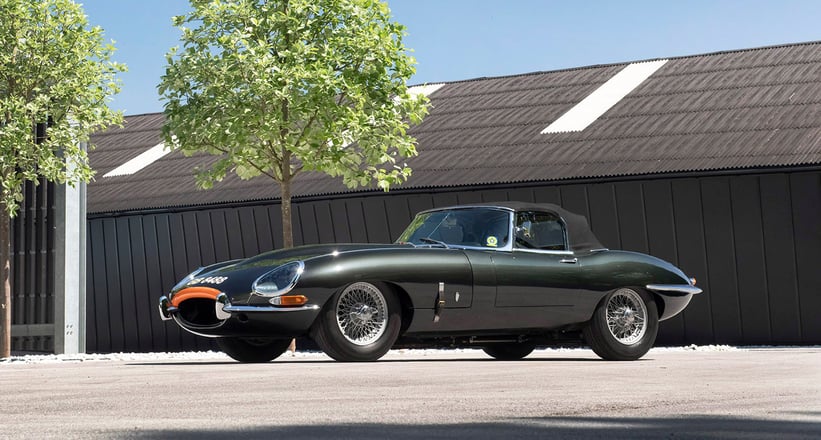
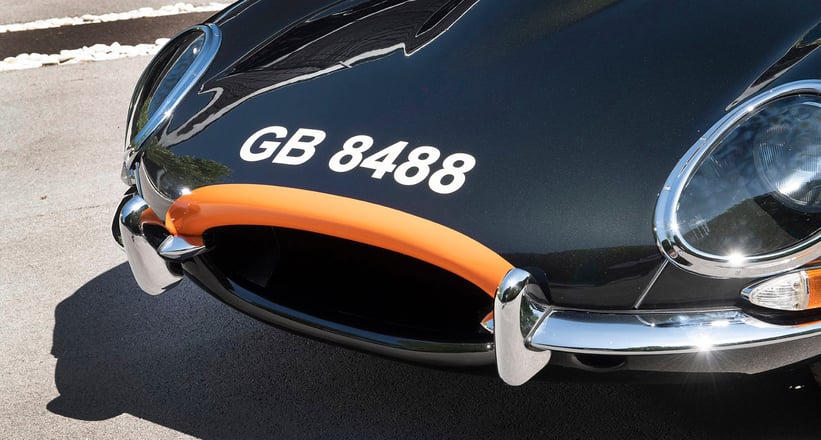
Sir Gawaine retired the Jaguar after that, choosing instead to focus on the British Saloon Car Championship after discovering the intoxicating grunt of American V8 power. Driving his fuel-injected Ford Falcon, he actually won the Class A class in 1965. His E-type was returned to road car specification and subsequently made its way across the pond, where it remained in astoundingly original condition until 2018, when it was bought by the current owner.
Said owner immediately took advantage of this very early competition E-type’s incredible eligibility, entering the fiercely contested Kinrara Trophy at the Goodwood Revival, where it proved to be a frontrunner. To preserve the precious original competition engine, close-ratio gearbox and bonnet which, scarcely believably, remain with the car, Jaguar guru Gary Pearson had replacements made for racing.
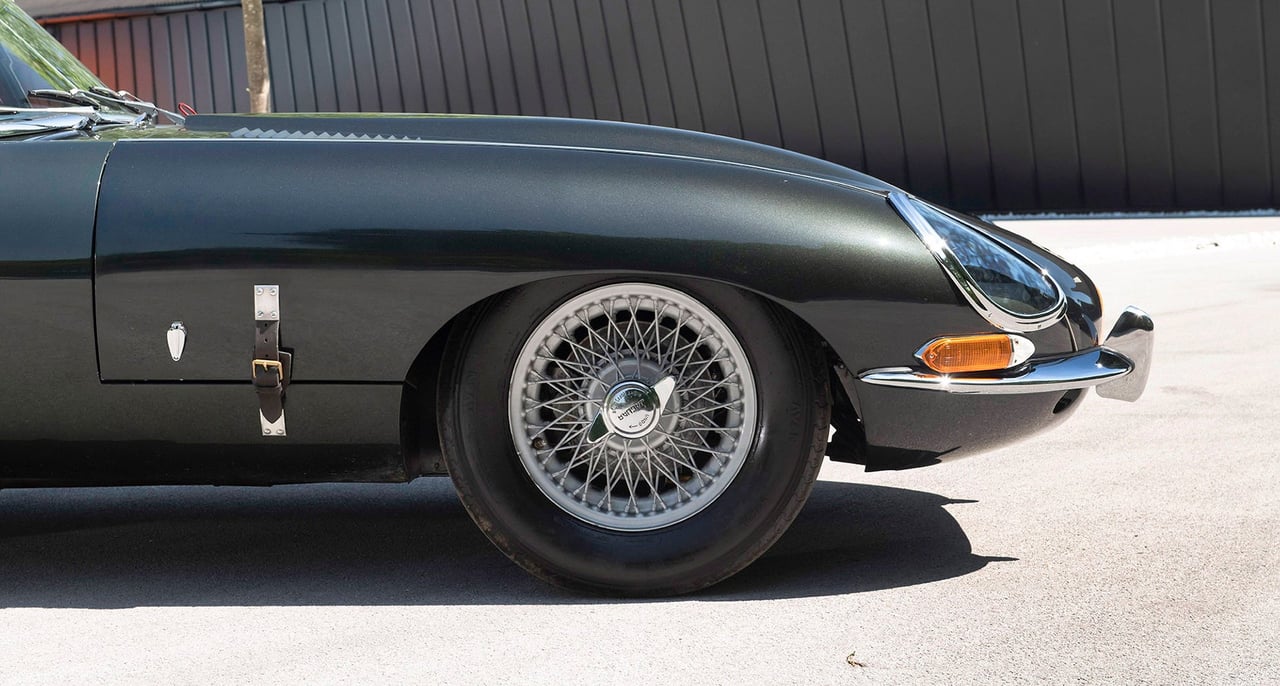
The significance of 850008, which is currently offered openly for sale for the first time by Classic Driver dealer Duncan Hamilton ROFGO, is difficult to downplay. The ‘Project ZP’ cars are not only among the very earliest E-types to leave Jaguar’s Browns Lane plant, but they also represent the genesis of the car’s competition career, which further helped to immortalise the model as one of motoring history’s greatest ever cars. Need we remind you that they’re also rarer than the Lightweights that followed.
That this car presents in the preserved condition it does is simply another string to its collector car bow. If you want an E-type that legitimately stands head and shoulders above the 72,000 others that were produced in the 14 years after the model’s momentous Geneva debut in 1961, here’s your chance.
Photos courtesy of Duncan Hamilton ROFGO © 2020





























